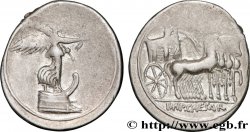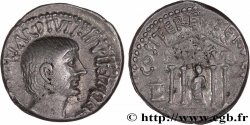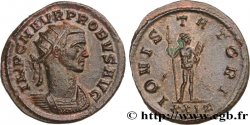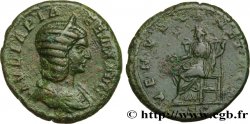v55_0101 - OCTAVIAN Quinaire
MONNAIES 55 (2012)
Starting price : 175.00 €
Estimate : 280.00 €
Realised price : 175.00 €
Starting price : 175.00 €
Estimate : 280.00 €
Realised price : 175.00 €
Type : Quinaire
Date: 29 AC.
Mint name / Town : Asie, Éphèse
Metal : silver
Millesimal fineness : 950 ‰
Diameter : 14,5 mm
Weight : 1,58 g.
Rarity : R2
Coments on the condition:
Exemplaire sur un petit flan bien centré. Beau portrait d’Octave au droit, bien venu à la frappe, de style fin. Trace de frappe brouillée incuse au revers. Belle patine de collection ancienne avec des reflets gris foncé
Catalogue references :
C.14 (4f.) - RIC.276 - BMC/RE.647 - BN/R.901 - RCV.1568 (400$) - BMC/RR.240 (East) - CRI.429 - RSC.14 - MRK.2 /5
Obverse
Obverse legend : CAESAR - IMP VII.
Obverse description : Tête nue d’Octave à droite (O°).
Obverse translation : “Cæsar Imperator Septimum”, (César revêtu de la septième acclamation impériale).
Reverse
Reverse legend : INCUS.
Commentary
Poids très léger. L’attribution de ce quinaire est controversée. C. H. V. Sutherland (RIC. 276) le donne à l’atelier de Rome ou de Brindisium frappé entre 29 et 27 avant J.-C. alors que J.-B. Giard le donne à l’atelier d’Éphèse (BN/R., p. 44, pl. XXXV, n° 899) en août 29 avant J.-C. Le style fait néanmoins penser à un atelier oriental. Petite contremarque sur la joue. Les quinaires incus semblent beaucoup plus rares.
Very light weight. The attribution of this quinary is controversial. CHV Sutherland (RIC. 276) gives it to the mint of Rome or Brindisium struck between 29 and 27 BC, while J.-B. Giard gives it to the mint of Ephesus (BN/R., p. 44, pl. XXXV, no. 899) in August 29 BC. The style nevertheless suggests an oriental mint. Small countermark on the cheek. Incused quinaries seem much rarer
Very light weight. The attribution of this quinary is controversial. CHV Sutherland (RIC. 276) gives it to the mint of Rome or Brindisium struck between 29 and 27 BC, while J.-B. Giard gives it to the mint of Ephesus (BN/R., p. 44, pl. XXXV, no. 899) in August 29 BC. The style nevertheless suggests an oriental mint. Small countermark on the cheek. Incused quinaries seem much rarer







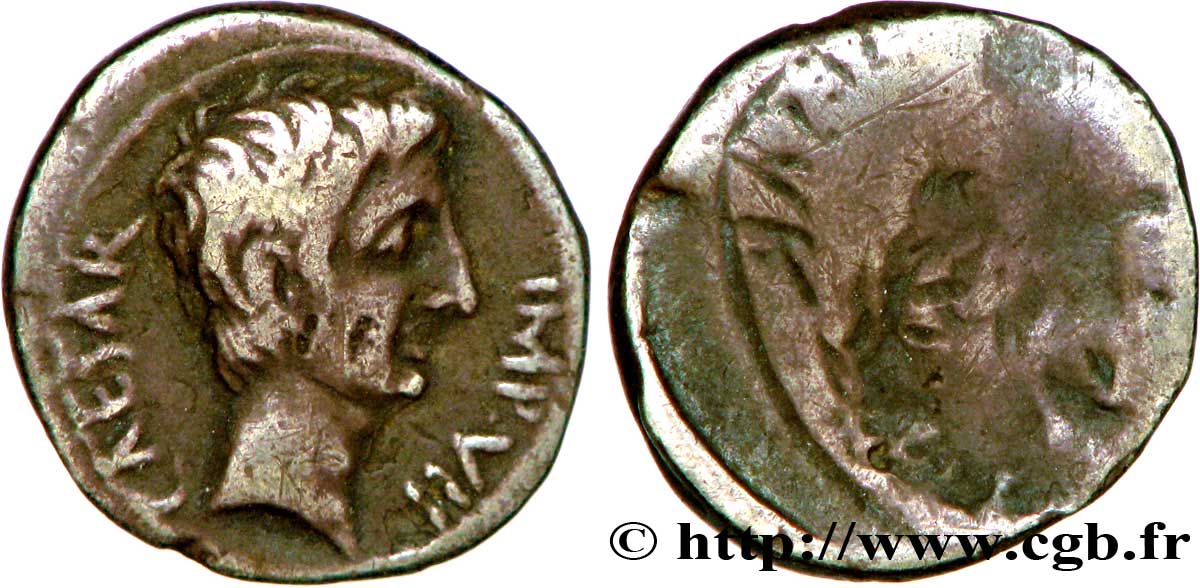
 Report a mistake
Report a mistake Print the page
Print the page Share my selection
Share my selection Ask a question
Ask a question Consign / sell
Consign / sell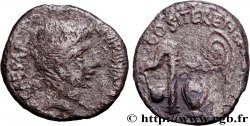
 Full data
Full data

